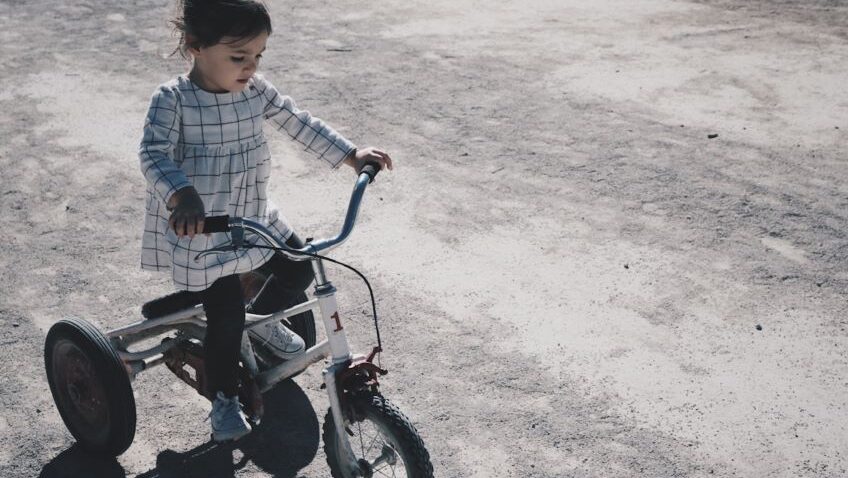Hearing that their child has been involved in a car accident, regardless of the context in which they were found, is any parent’s worst nightmare. A similar scenario can seriously impact the caregivers’ mental health if the child is severely affected by the incident. However, car accidents are a fact of life in this fast-paced era marked by the desire for instant gratification, minimising drivers’ focus and patience behind the wheel, calling for better safety measures, and educating children about the risks they’re exposing when riding their bikes alone on the streets. The most recent statistics show that there were 4,215 grave injuries in pedal cyclists involved in car accidents and 11,938 slight injuries in the same category, showing a decrease compared to figures from the previous years. However, a small fraction of those accidents are unfortunately represented by children riding their bikes with or without supervision, making it crucial for road participants to pay increased attention to imminent dangers.
If your child is ever involved in a car accident while riding their bike and suffers injuries due to another party’s breach of duty of care, you may be within your rights to make a personal injury claim on their behalf. The recommended way to go is to seek legal advice from an experienced solicitor to determine whether your case qualifies for a claim and proceed with the action if they agree to assist you. Indeed, not every mishap involving a victim in a car accident can make it, so don’t fail to prey on assumptions that your triumph is guaranteed, and reach out to someone who can clear the waters for you instead.
Determining whether you’re eligible to claim against the defendant is the first step
Indeed, the paramount step to take if your child is implicated in a car accident while riding their bike (or in any other circumstance) is providing the best medical care and treating every injury. It’s essential to make a doctor’s appointment, as your child may have sustained injuries that are not easily seen by the naked eye and which can become significantly threatening in the future if left untreated.
Children involved in car accidents bring about legal considerations that caretakers must be aware of. After providing prompt medical care, the next step you should take as their parent and guardian is to see if the accident qualifies as a personal injury claim. Everybody who participates in traffic is responsible for behaving accordingly and protecting the health and safety of other participants, drawing legal and financial repercussions when the opposite happens. Several instances prove your child has suffered injuries because of someone’s breach of duty of care, including the following two:
• The driver responsible breached their duty of care of keeping your child out of harm’s way
• The driver’s behaviour was reckless or careless, putting them in danger.
Making a claim against the car’s insurance
After the accident, you should exchange insurance and contact details with other witnesses when you arrive. Gather as much information as possible, as you’ll be in for fierce competition with the insurance company.
Before seeking compensation for your child’s sufferings, you should remember something: some injuries and instances don’t qualify as personal injury claims. At the same time, there’s a lot of conflicting information surrounding winning financial compensation after a victim suffers injuries from an accident. You’re prone to being exposed to misinformation from coworkers, friends, and pretty much anyone who has made claims against an insurance provider. However, the truth is that insurance companies don’t work in your interest, and providing you with lowball offers is their way of making money. Their best interest doesn’t reflect yours, meaning they will work their best to secure their profits. An experienced lawyer can go after them and increase your chances of winning the deserved financial compensation so that you can undo some of the wrong done to your child.
Rushing to claim may secure your compensation
Starting the process as soon as possible is recommended, as personal injury claims can be made within three or fewer years. This means that you must file a lawsuit on behalf of your children within three years of discovering they have been injured. Generally, you’ll be subjected to different time limits within which proceeding with legal action is allowed when claiming compensation for injuries, regardless of whether the victim is a child or an adult.
In some cases, the court may expand the time limit, but it depends on the peculiarities of the case.
In the event of a successful case and to work in your child’s best interest, the compensation your children is entitled are invested by the court funds office until they reach the significant age.
What are the most common bicycle accident injuries that you may be eligible to claim for?
The most widespread type of injury children (and not only) can sustain in a car accident while riding their bike is the head. Injuries in this area can vary significantly in severity, ranging from scratches to fatal injuries. Depending on the type of injury sustained, the cost of the needed medical care, and other impacts on your children, you’ll be calculated a compensation amount if there are grounds for your claim.
Other common examples that may be encountered include:
• Soft tissue injuries
• Facial injuries
• Spinal injuries
• Neck injuries
• Limb injuries
• Foot injuries.
Don’t sit quietly: ensure justice is done.
When accidents on the road involve children, the situation is more enraging than any other mishap. Having a bruise on the knee from falling off a bike is nothing unusual, and no reason to make worries, but when a graver accident occurs, and someone else is liable for their suffering, seeking justice and reducing the damages sustained is the right approach.
Claiming for compensation on your child’s behalf is quite similar to doing the same thing for an injury sustained by yourself. The actions resemble that they require evidence to prove your children are not at fault for the injuries suffered, or at least they split the quilt with the driver.




